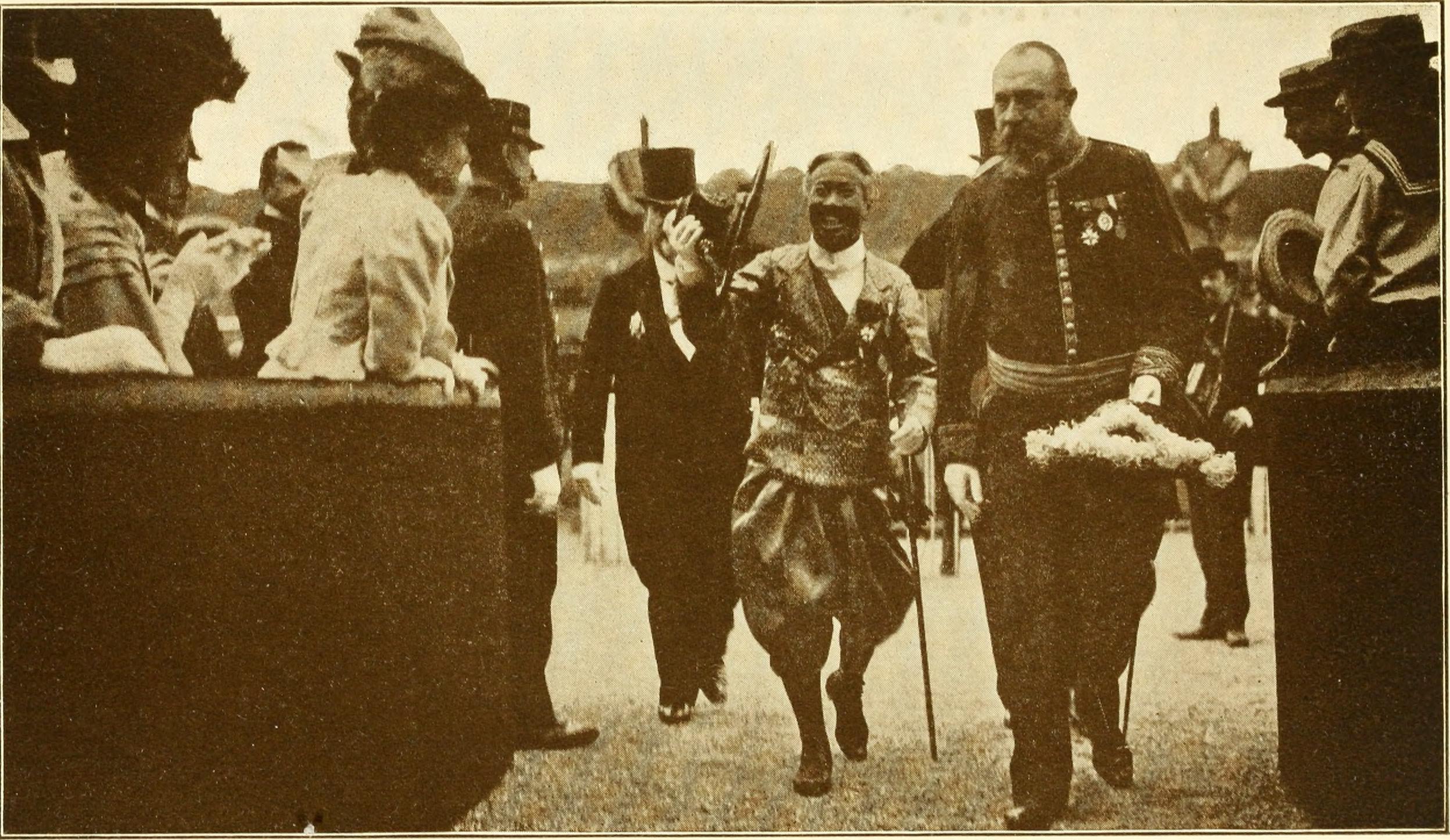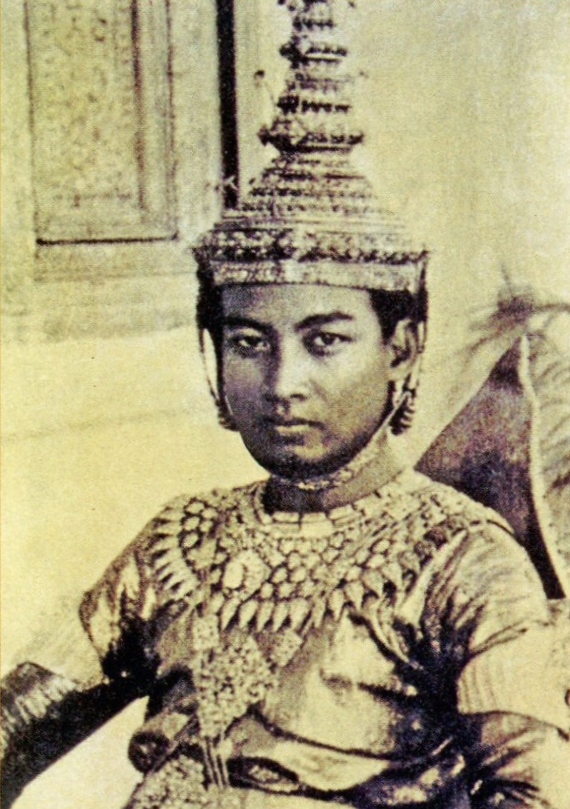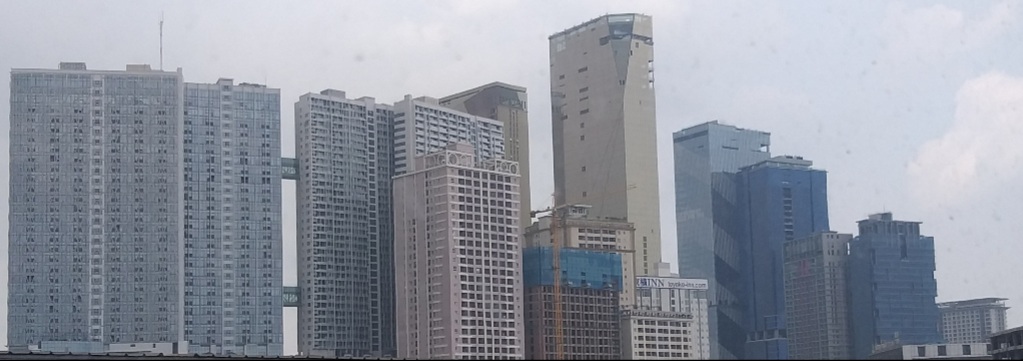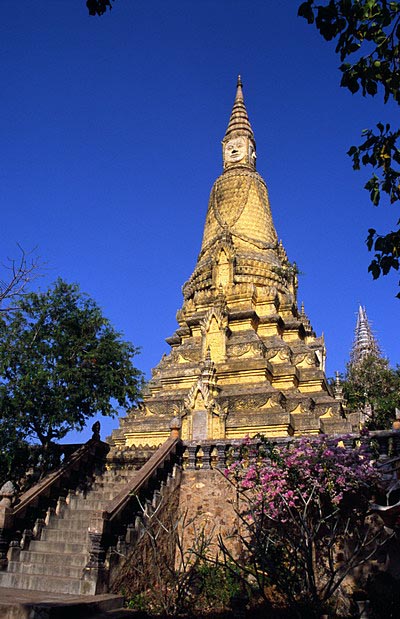|
French Protectorate Of Cambodia
The French protectorate of Cambodia ( km, ប្រទេសកម្ពុជាក្រោមអាណាព្យាបាលបារាំង; french: Protectorat français du Cambodge) refers to the Kingdom of Cambodia when it was a French protectorate within French Indochina, a collection of Southeast Asian protectorates within the French Colonial Empire. The protectorate was established in 1863 when the Cambodian King Norodom requested the establishment of a French protectorate over his country, meanwhile Siam (modern Thailand) renounced suzerainty over Cambodia and officially recognised the French protectorate on Cambodia. Cambodia was integrated into the French Indochina union in 1887 along with the French colonies and protectorates in Vietnam (Cochinchina, Annam and Tonkin). In 1946, Cambodia was granted self-rule within the French Union and had its protectorate status abolished in 1949. Cambodia later gained its independence. The day was celebrated as independen ... [...More Info...] [...Related Items...] OR: [Wikipedia] [Google] [Baidu] |
New Imperialism
In historical contexts, New Imperialism characterizes a period of colonial expansion by European powers, the United States, and Japan during the late 19th and early 20th centuries. Com The period featured an unprecedented pursuit of overseas territorial acquisitions. At the time, states focused on building their empires with new technological advances and developments, expanding their territory through conquest, and exploiting the resources of the subjugated countries. During the era of New Imperialism, the Western powers (and Japan) individually conquered almost all of Africa and parts of Asia. The new wave of imperialism reflected ongoing rivalries among the great powers, the economic desire for new resources and markets, and a "civilizing mission" ethos. Many of the colonies established during this era gained independence during the era of decolonization that followed World War II. The qualifier "new" is used to differentiate modern imperialism from earlier imperi ... [...More Info...] [...Related Items...] OR: [Wikipedia] [Google] [Baidu] |
French Language
French ( or ) is a Romance language of the Indo-European family. It descended from the Vulgar Latin of the Roman Empire, as did all Romance languages. French evolved from Gallo-Romance, the Latin spoken in Gaul, and more specifically in Northern Gaul. Its closest relatives are the other langues d'oïl—languages historically spoken in northern France and in southern Belgium, which French ( Francien) largely supplanted. French was also influenced by native Celtic languages of Northern Roman Gaul like Gallia Belgica and by the ( Germanic) Frankish language of the post-Roman Frankish invaders. Today, owing to France's past overseas expansion, there are numerous French-based creole languages, most notably Haitian Creole. A French-speaking person or nation may be referred to as Francophone in both English and French. French is an official language in 29 countries across multiple continents, most of which are members of the ''Organisation internationale de la Francophonie'' ... [...More Info...] [...Related Items...] OR: [Wikipedia] [Google] [Baidu] |
Jean Risterucci
Jean may refer to: People * Jean (female given name) * Jean (male given name) * Jean (surname) Fictional characters * Jean Grey, a Marvel Comics character * Jean Valjean, fictional character in novel ''Les Misérables'' and its adaptations * Jean Pierre Polnareff, a fictional character from ''JoJo's Bizarre Adventure'' Places * Jean, Nevada, USA; a town * Jean, Oregon, USA Entertainment * Jean (dog), a female collie in silent films * "Jean" (song) (1969), by Rod McKuen, also recorded by Oliver * ''Jean Seberg'' (musical), a 1983 musical by Marvin Hamlisch Other uses * JEAN (programming language) * USS ''Jean'' (ID-1308), American cargo ship c. 1918 * Sternwheeler Jean, a 1938 paddleboat of the Willamette River See also * Jehan * * Gene (other) * Jeanne (other) * Jehanne (other) * Jeans (other) Jeans are denim trousers. Jeans may also refer to: Astronomy * Jeans (lunar crater) * Jeans (Martian crater) * 2763 Jeans, an asteroi ... [...More Info...] [...Related Items...] OR: [Wikipedia] [Google] [Baidu] |
Ernest Doudart De Lagrée
Ernest Marc Louis de Gonzague Doudart de Lagrée (; March 31, 1823 – March 12, 1868) was the leader of the French Mekong Expedition of 1866-1868. He was born in Saint-Vincent-de-Mercuze near Grenoble, France, and graduated from the École Polytechnique. He joined the navy and served in the Crimean War, then took up a post in Indochina in the hope that the climate would help his chronically ulcerated throat. It did not, and throughout the Mekong expedition he was often in severe pain. The expedition left Saigon on June 5, 1866. In addition to his ulcers, Doudart de Lagrée suffered from fever, amoebic dysentery and infected wounds caused by leeches, as the expeditioners had to walk barefoot once they had worn out their supply of shoes. By the time the expedition reached Dongchuan, in Yunnan, China, he was too sick to be moved, and his second-in-command Francis Garnier took command. Garnier led the expedition to Dali, leaving Doudart de Lagrée in the care of the doctor. H ... [...More Info...] [...Related Items...] OR: [Wikipedia] [Google] [Baidu] |
List Of Administrators Of The French Protectorate Of Cambodia
This article lists the administrators of the French protectorate of Cambodia, and also encompass the Japanese occupation of Cambodia. (Dates in italics indicate ''de facto ''continuation of office) {, class="wikitable" , - align=left ! Tenure ! width=60px, Portrait ! Incumbent ! Notes , - , colspan="4", French suzerainty , - , April 1863 to July 1866, , , , Ernest Marc Louis de Gonzague Doudart de Lagrée, Representative, , , - , July 1866 to 20 February 1868, , , , Armand Pottier, Representative, , 1st time , - , 20 February 1868 to 10 March 1870, , , , Jean Moura, Representative, , 1st time , - , 10 March 1870 to 11 November 1870, , , , Armand Pottier, Acting Representative, , 2nd time , - , 11 November 1870 to 1 January 1871, , , , Jules Marcel Brossard de Corbigny, Acting Representative, , , - , 1 January 1871 to 1 May 1876, , , , Jean Moura, Representative, , 2nd time , - , 1 May 1876 to 9 November 1876, , , , Paul-Louis-Félix Philastre, Acting Representative ... [...More Info...] [...Related Items...] OR: [Wikipedia] [Google] [Baidu] |
Norodom Sihanouk
Norodom Sihanouk (; km, នរោត្តម សីហនុ, ; 31 October 192215 October 2012) was a Cambodian statesman, Sangkum and FUNCINPEC politician, Norodom Sihanouk filmography, film director, and composer who led Cambodia in various capacities throughout his long career, most often as both Monarchy of Cambodia, King and Prime Minister of Cambodia. In Cambodia, he is known as Samdech Euv ( km, សម្តេចឪ, link=no, ; meaning "King Father"). During his lifetime, Cambodia was under various regimes, from French protectorate of Cambodia, French colonial rule (until 1953), Cambodia (1953–1970), an independent kingdom (1953–1970), Khmer Republic, a republic (1970–1975), Democratic Kampuchea, the Khmer Rouge regime (1975–1979), People's Republic of Kampuchea, another communist regime (1979–1989), State of Cambodia (1989–1993), a state (1989–1993) to finally Kingdom of Cambodia, another kingdom (since 1993). Sihanouk was the only child of Prince No ... [...More Info...] [...Related Items...] OR: [Wikipedia] [Google] [Baidu] |
Sisowath Monivong
Sisowath Monivong ( km, ស៊ីសុវត្ថិ មុនីវង្ស, ;Headly, Robert K.; Chhor, Kylin; Lim, Lam Kheng; Kheang, Lim Hak; Chun, Chen. 1977. ''Cambodian-English Dictionary''. Bureau of Special Research in Modern Languages. The Catholic University of America Press. Washington, D.C. 27 December 1875 – 24 April 1941) was the King of Cambodia from 9 August 1927 until his death in 1941. During his reign, Cambodia was a French protectorate. Monivong was the grandson of the poet-king Ang Duong, grandfather of Norodom Sihanouk and the great-grandfather of the current king, Norodom Sihamoni. His full regnal title and style was ''Preah Bat Samdech Preah Serey Monivarman Krom Luang Chao Chakrabangsa Sisowath Monivong Ney Preah Reacheanachak Kampuchea'' ( km, ព្រះបាទសម្តេចព្រះសិរីមុនីវរ្ម័នក្រុមហ្លួងចៅចក្របាងស្ស ស៊ីសុវត្ថិ មុនី� ... [...More Info...] [...Related Items...] OR: [Wikipedia] [Google] [Baidu] |
Sisowath Of Cambodia
Sisowath ( km, ស៊ីសុវត្ថិ, ; 7 September 1840 – 9 August 1927) was King of Cambodia from 27 April 1904 to his death in 1927. He was the son of King Ang Duong and half brother of Prince Si Votha and King Norodom. He is the progenitor of the House of Sisowath. Life Sisowath was given the birth name of "Ang Sar" (). When he was born, Cambodia was under joint Siamese and Vietnamese rule. The royal family lived in Battambang then under Siamese hegemony. Like his brother King Norodom, Sisowath was educated in the Siamese capital of Bangkok. He did not return to his native Cambodia until 1860, when his father and the ruling monarch, Ang Duong, died. He hastily returned to Oudong, the royal capital of Cambodia, to prevent his half-brother, Prince Si Votha from seizing the throne. He succeeded, and his other half-brother, Norodom, became king. Although Norodom was more compliant, rebellion broke out in Cambodia, and soon the French, seeking control of Southeast ... [...More Info...] [...Related Items...] OR: [Wikipedia] [Google] [Baidu] |
Norodom Of Cambodia
Norodom ( km, នរោត្តម, ; born Ang Voddey ( km, អង្គវតី, ); 3 February 1834 – 24 April 1904) was King of Cambodia from 19 October 1860 to his death on 24 April 1904. He was the eldest son of King Ang Duong and was a half-brother of Prince Si Votha and King Sisowath. He was elected to the throne in 1860 but would not be crowned until 1864 due to the fact that Siam held the royal regalia (the royal crown and other artefacts). In 1863, he signed a treaty with France by which he gave France control over Cambodia's foreign relations in exchange for personal protection against his enemies. The treaty saved Cambodian independence, but French control over Cambodia's internal affairs strengthened continually until the end of his reign (full independence was not restored until 1953). His reign of is the longest in Cambodian history in terms of verifiable exact date. Upon his death, he was succeeded by his half-brother, Sisowath. He is the progenitor of the ... [...More Info...] [...Related Items...] OR: [Wikipedia] [Google] [Baidu] |
Monarchy Of Cambodia
The monarchy of Cambodia is the head of state of the Cambodia, Kingdom of Cambodia. In the contemporary period, the King's power has been limited to that of a symbolic figurehead. The monarchy had been in existence since at least 68 AD except during its abolition from 1970 to 1993. Since 1993, the King of Cambodia has been an elected monarch, making Cambodia one of the few elective monarchy, elective monarchies of the world. The king is elected for life by the Royal Council of the Throne, which consists of several senior political and religious figures. Candidates are chosen from among male descendants of King Ang Duong who are at least 30 years old, from the two royal houses of Cambodia (the House of Norodom and the House of Sisowath). Role Cambodia's constitution, promulgated in 1993 stipulated the king's role as a mainly ceremonial one. It declared that the king "shall reign, but not govern" as well as being the "symbol of national unity and continuity". The king perfo ... [...More Info...] [...Related Items...] OR: [Wikipedia] [Google] [Baidu] |
Phnom Penh
Phnom Penh (; km, ភ្នំពេញ, ) is the capital and most populous city of Cambodia. It has been the national capital since the French protectorate of Cambodia and has grown to become the nation's primate city and its economic, industrial, and cultural centre. Phnom Penh succeeded Angkor Thom as the capital of the Khmer nation but was abandoned several times before being reestablished in 1865 by King Norodom. The city formerly functioned as a processing center, with textiles, pharmaceuticals, machine manufacturing, and rice milling. Its chief assets, however, were cultural. Institutions of higher learning included the Royal University of Phnom Penh (established in 1960 as Royal Khmer University), with schools of engineering, fine arts, technology, and agricultural sciences, the latter at Chamkar Daung, a suburb. Also located in Phnom Penh were the Royal University of Agronomic Sciences and the Agricultural School of Prek Leap. The city was nicknamed the "Pearl of As ... [...More Info...] [...Related Items...] OR: [Wikipedia] [Google] [Baidu] |
Oudong
( km, ឧដុង្គ; also romanized as Udong or Odong) is a former town of the post-Angkorian period (1618–1863) situated in present-day ''Phsar Daek'' Commune, Ponhea Lueu District, Kandal Province, Cambodia. Located at the foothill of the mountain Phnom Oudong, also known as Phnom Preah Reach Troap ( km, ភ្នំព្រះរាជ្យទ្រព្យ), about 35 km northwest of the modern capital Phnom Penh via National Road No. 5, Oudong was a royal residence and Cambodia's capital for almost 250 years until 1866. A monumental royal necropolis of sovereigns of several centuries is scattered on top of the prominent bisected mountain, which runs from the southeast to the northeast. Etymology The city's name is derived from the Sanskrit word "" ( sa, उत्तुङ्ग), meaning tall, which probably refers to the mountain. As it had gained religious merit and significance it might have undergone extension towards: "great" or "supreme". History Oudong was ... [...More Info...] [...Related Items...] OR: [Wikipedia] [Google] [Baidu] |




.jpg)

